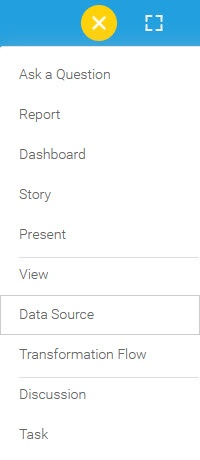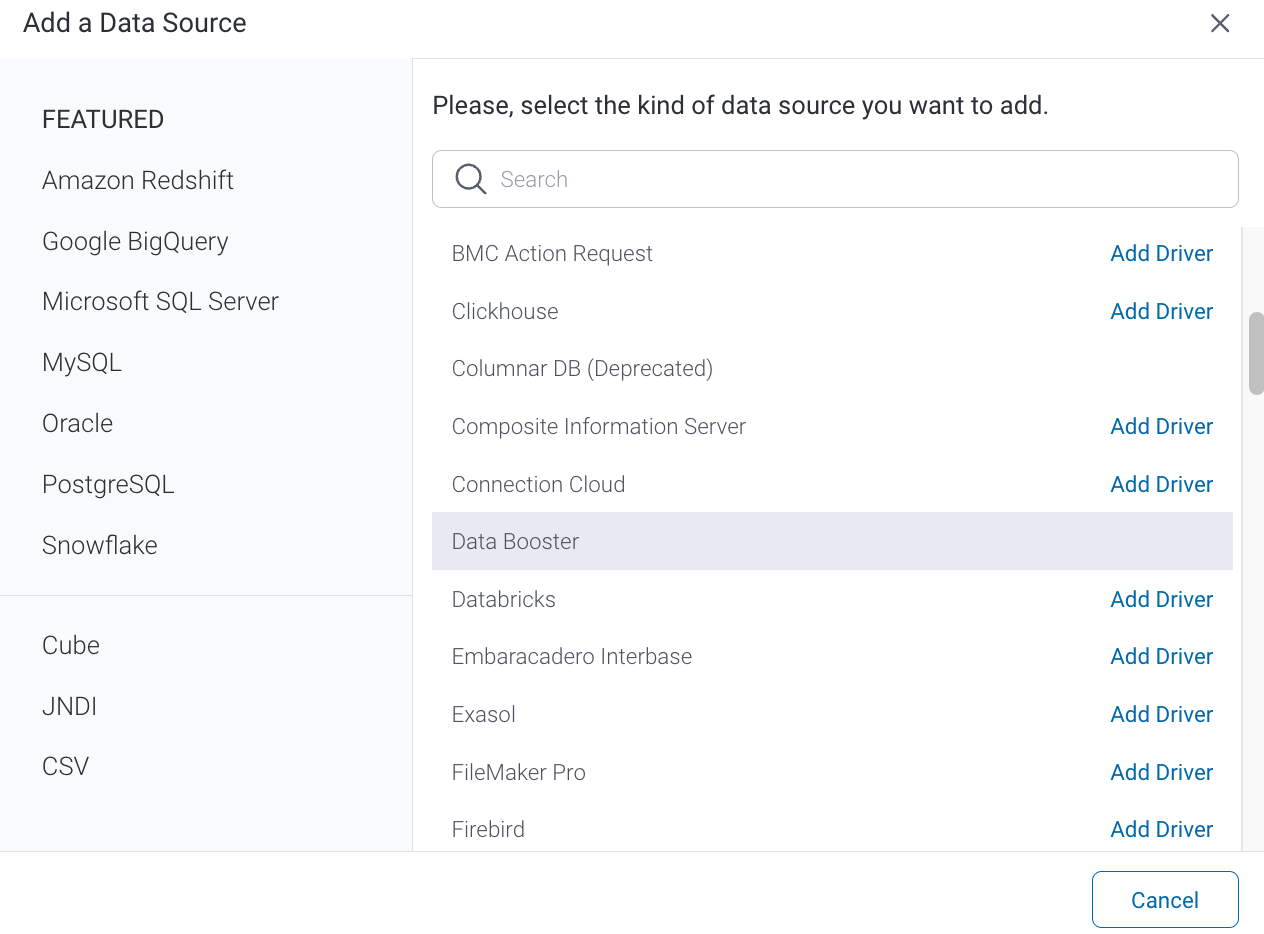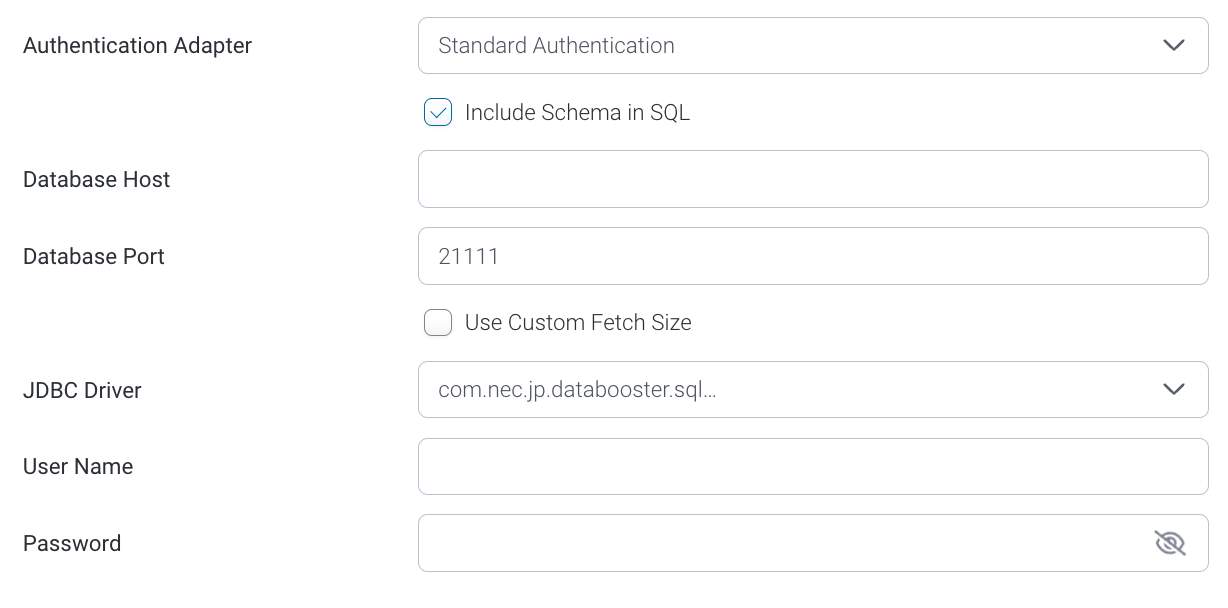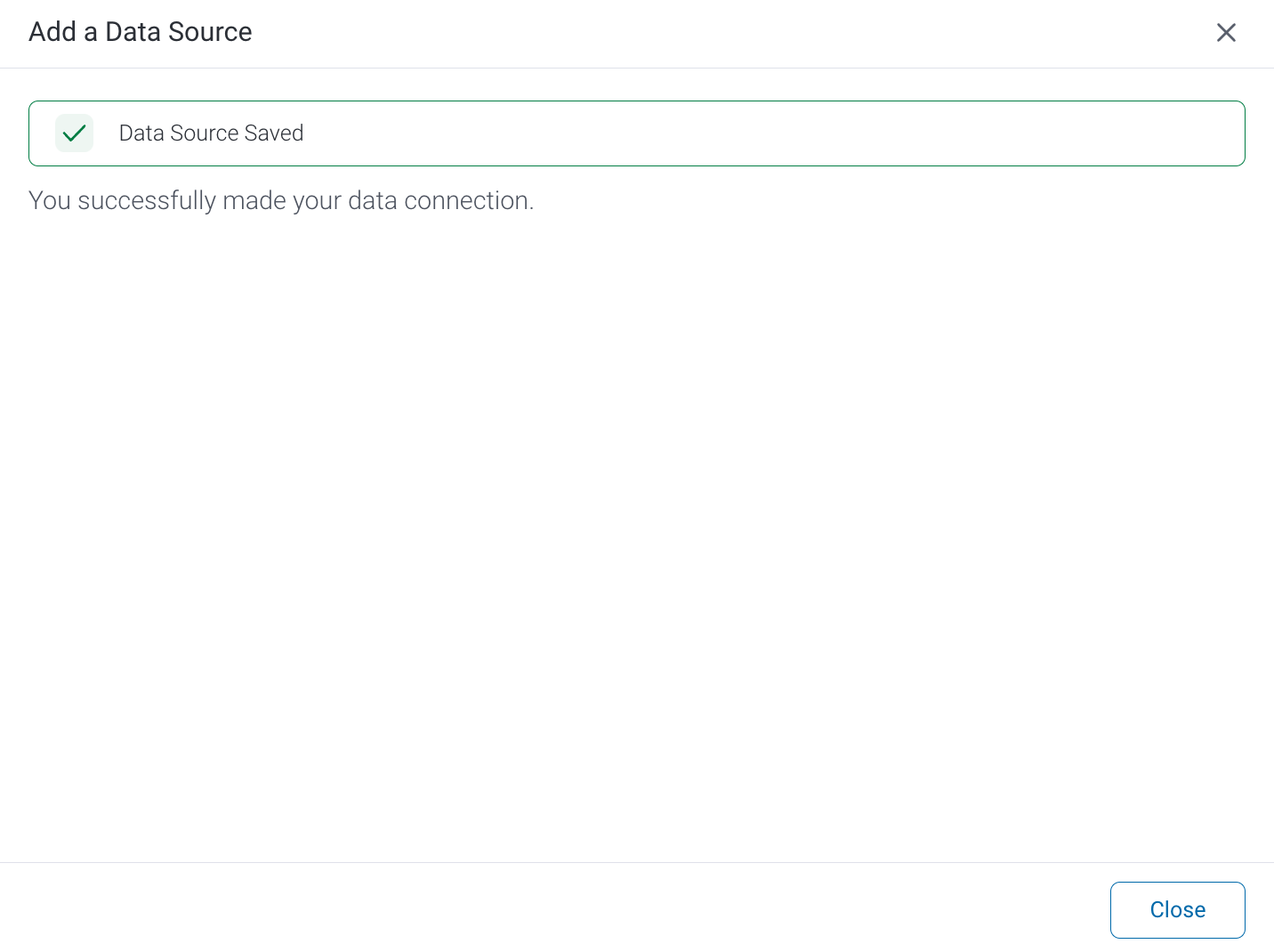Page History
...
| Note |
|---|
Yellowfin does not ship with the driver required for this connection due to licensing/paywall reasons. You will need to manually upload the driver through the Plugin Manager or Add Driver or Creating a Basic Data Source Connection. |
1. Click on the Create button and choose the data source option.
2. Select Data Booster from the databases list.
3. Connection String: when selecting Connection String you have the same functionality as in Generic JDBC Data Source.
4. Choose Choose Data Booster configuration fields:.
5. Authentication Adapter: Specify an authentication method for the database adapter. More details Advanced Connection Editor.
6. Include Schema in SQL: Select this checkbox to add the schema name when addressing database tables in SQL queries.
7. Database Host: Enter the name or IP address of the server hosting the Data Booster database.
8. Database Port: Yellowfin will display the correct TCP/IP port number for this connection.
9. Use Custom Fetch Size: Select this checkbox if you want a specific number of data rows to be retrieved from the database after a query is executed, instead of fetching its entire result. Specify the number of rows in the newly appearing Fetch Size field. Doing so will allow Yellowfin to process data faster.
910. JDBC Driver: The JDBC driver to talk to your Data Booster database.
1011. Username: Enter the username of your Data Booster database account.
1112. Password: Provide the password of the above account.
1213. Toggle Toggle Advanced Settings to to see more settings.
1413. Once you have completed your connection information, you will have several options:
...
- Back: This will navigate to the database selection.
- Cancel: This will close the New Connection popup.
- Test Connection: This will test the connection parameters you provided to ensure it can connect to your database. If the connection is successful, an indicator will appear and you will be able to save the connection.
- Save: This will allow you to save your connection and navigate to the Success page:

















